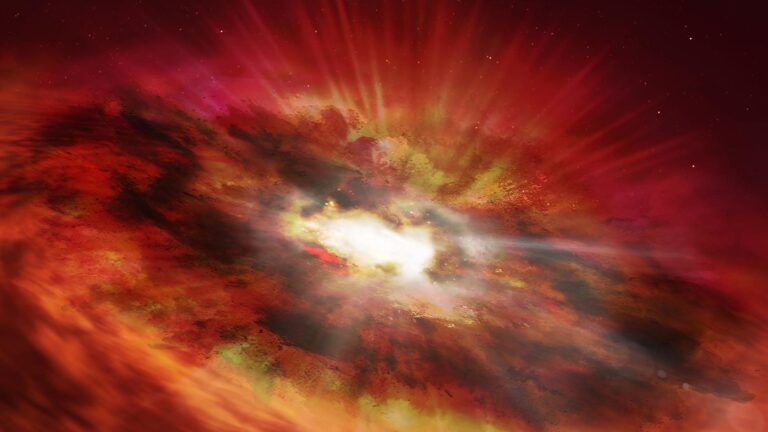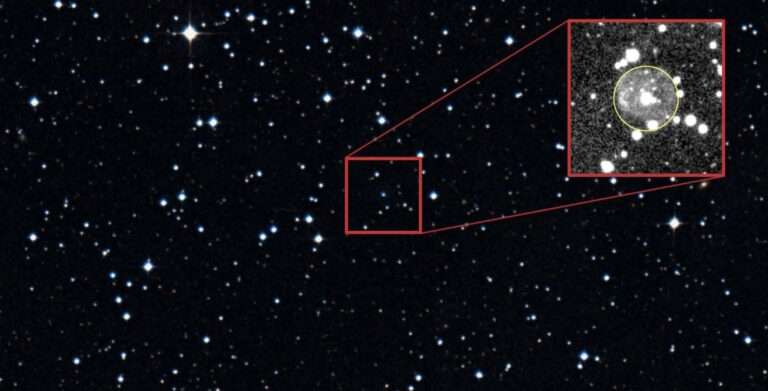
This is an artist's impression of a supermassive black hole that is inside the dust-shrouded core of a vigorously star-forming "starburst" galaxy. It will eventually become an extremely bright quasar once the dust is gone. The research team believes that the object, discovered in a Hubble deep-sky survey, could be the evolutionary "missing link" between quasars and starburst galaxies. The dusty black hole dates back to only 750 million years after the Big Bang. (NASA, ESA, N. Bartmann/Newsflash)
Astronomers have identified a rapidly-growing black hole considered a “missing link” in our knowledge of the early universe. Using data from NASA's Hubble Space Telescope, experts discovered the "monster" body…




